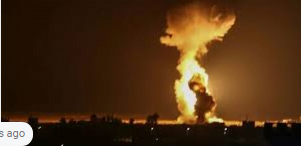International Humanitarian Law on Human Shields and Forced Displacement
In recent developments, accusations of the use of human shields and forced displacement have emerged in the ongoing conflict in the Middle East. This article delves into what these terms mean and how they are viewed under International Humanitarian Law (IHL).
Human Shields: A Breach of International Law
- The term ‘human shields’ in IHL refers to civilians or other protected persons whose presence or movement is exploited to make military targets immune from military operations.
- Importantly, human shields do not need to physically shield against bullets to be considered as such.
- Even compelling them to remain near military targets or placing military assets within or near civilian structures qualifies as the use of human shields. IHL safeguards not only civilians but also the sick, wounded, shipwrecked individuals not engaged in hostilities, prisoners of war, and detainees, in addition to civilian populations and objects.
- The use of human shields is unequivocally considered a war crime and is expressly prohibited by Rule 97 of IHL. Moreover, it is also prohibited to deliberately target or attack human shields. However, it’s important to note that civilians can lose their immunity from attack if they directly participate in hostilities.
- In the densely populated Gaza Strip, the presence of combatants from certain groups like Hamas complicates the situation, but regardless of intent or necessity, attacking civilian homes would not be legal under IHL.
Forced Displacement: A Violation of International Law
- Forced displacement involves ordering civilians to leave their homes due to conflict-related reasons, except when their security or imperative military needs necessitate such displacement, according to the Statute of the International Criminal Court.
- Last week, Israel ordered hundreds of thousands of northern Gaza civilians to evacuate within 24 hours, raising concerns of forced displacement.
- Under international law, it is considered necessary to warn civilians and non-combatants about legitimate military operations that may endanger them.
- However, it is illegal to threaten civilians with displacement. Threats, in this context, involve informing the civilian population about impending unlawful, indiscriminate, or disproportionate attacks.
- Crucially, any displacement of civilians must be temporary, lasting only until the conflict ends, and it must be carried out for the benefit and safety of the affected civilians.
- The distinction between evacuation and forced transfer hinges on whether the act genuinely contributes to the security and well-being of the civilians involved.
Month: Current Affairs - October, 2023
Category: International / World Current Affairs








